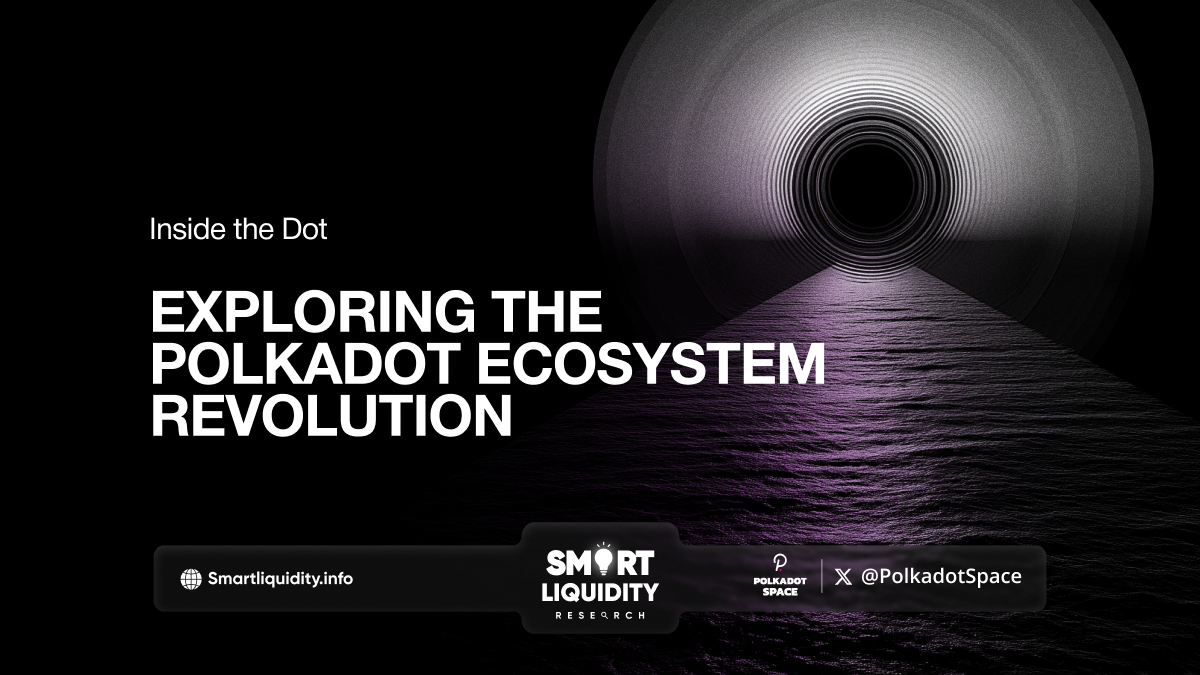Inside the Polkadot Ecosystem: Exploring the Blockchain Revolution


The Polkadot is leading a major shift in how blockchains interact, scale, and evolve. In a digital world filled with isolated networks, Polkadot introduces a connected, interoperable solution that unites blockchains into one scalable Web3 future. This article explores the heart of the Polkadot ecosystem and why it’s revolutionizing decentralized technology.
What Makes the Polkadot Ecosystem Unique?
At its core, the Polkadot is a multi-chain network that allows various blockchains—called parachains—to run in parallel. These chains can interact securely through the Relay Chain, the central backbone of Polkadot’s infrastructure.
Created by Ethereum co-founder Dr. Gavin Wood, Polkadot solves three of blockchain’s biggest challenges: scalability, interoperability, and governance. By design, it’s built to evolve with the rapidly changing demands of the Web3 landscape.
Key Components of the Polkadot Ecosystem
To understand how the Polkadot ecosystem works, let’s explore its essential building blocks:
🔗 Relay Chain: The Central Brain
The Relay Chain secures the network and enables communication between all connected chains. It does not support smart contracts directly but focuses on governance, consensus, and interoperability.
🧩 Parachains: Independent Yet Connected
Parachains are customizable blockchains that plug into the Relay Chain. Each can focus on a specific use case—such as DeFi, identity, or gaming—while still being part of the larger Polkadot ecosystem.
🌉 Bridges: Linking Polkadot to Other Networks
Bridges allow the Polkadot ecosystem to connect with external networks like Ethereum and Bitcoin. This enhances cross-chain functionality and asset transfers, increasing the ecosystem’s real-world utility.
Why the Polkadot Ecosystem Is a Blockchain Game-Changer
1. Seamless Interoperability
Most blockchains are siloed. However, Polkadot’s architecture allows for secure, seamless communication between chains. This feature unlocks complex multi-chain dApps that were previously impossible.
2. Massive Scalability
By processing transactions in parallel, the Polkadot avoids the bottlenecks seen in traditional Layer 1 chains. This leads to faster execution and lower network fees.
3. Advanced On-Chain Governance
Polkadot features a built-in governance system. DOT holders can propose upgrades, vote on decisions, and shape the future of the ecosystem—all without disruptive forks.
4. Developer Flexibility
Thanks to Substrate, developers can build parachains tailored to their specific use cases. Whether you’re launching a privacy app or a gaming network, the Polkadot ecosystem offers unmatched flexibility.
The Polkadot Ecosystem in Action
Today, the Polkadot ecosystem supports dozens of innovative projects across sectors:
Moonbeam: An Ethereum-compatible parachain for dApps
Acala: A DeFi hub offering stablecoins and liquidity solutions
Centrifuge: Tokenizing real-world assets like invoices and property
Phala Network: Privacy-preserving computing on Web3
These projects demonstrate the diversity and power of the growing Polkadot ecosystem.
Challenges and What Lies Ahead
Despite its strengths, the Polkadot still faces competition from other blockchain platforms. Regulatory uncertainty and technical complexity also present obstacles. Even so, Polkadot continues to evolve—introducing features like asynchronous backing and more robust bridges.
With continued development and community support, the Polkadot is positioned to remain a core player in the Web3 movement.
Final Thoughts: Why the Polkadot Ecosystem Matters
The Polkadot ecosystem offers more than blockchain—it offers a vision. By combining scalability, interoperability, and governance in a single framework, it paves the way for a truly connected decentralized internet.
If you’re building, investing, or simply exploring the future of Web3, look no further than inside the Polkadot. The revolution is happening—and it starts here.
DISCLAIMER:
“The information provided on this platform is for general informational purposes only. All information on the platform is provided in good faith; however, we make no representation or warranty of any kind, express or implied, regarding the accuracy, adequacy, validity, reliability, availability, or completeness of any information on the platform.”




